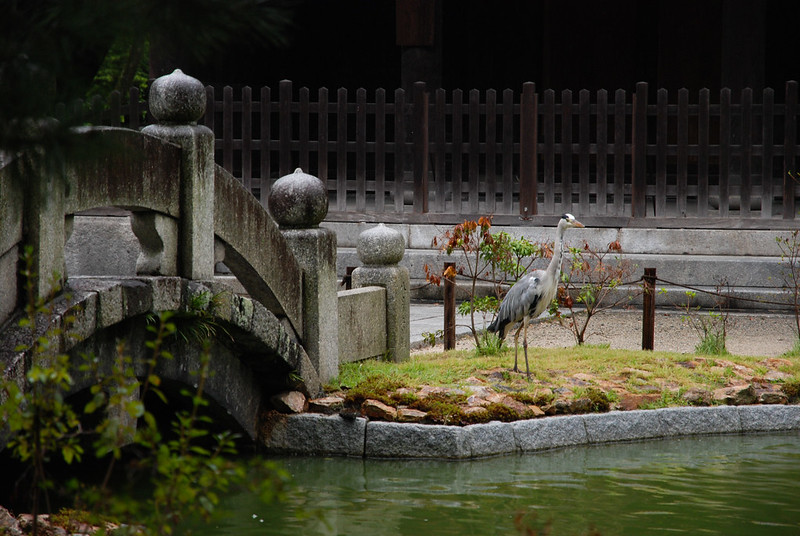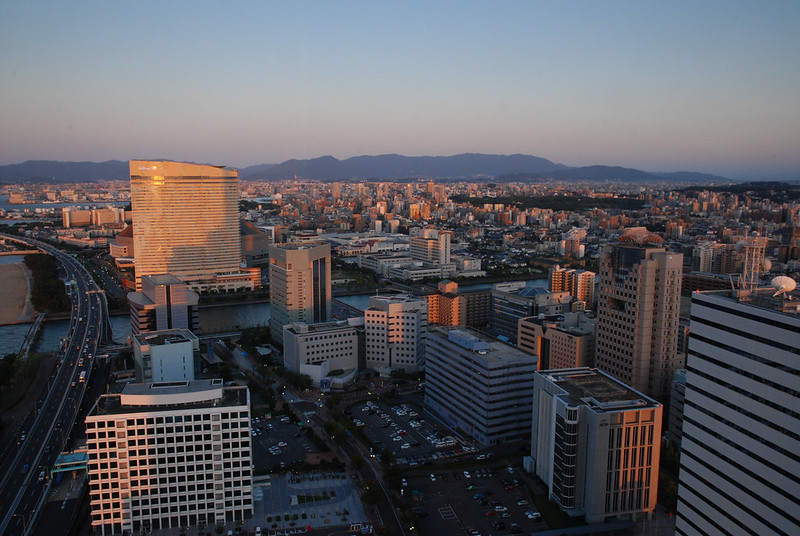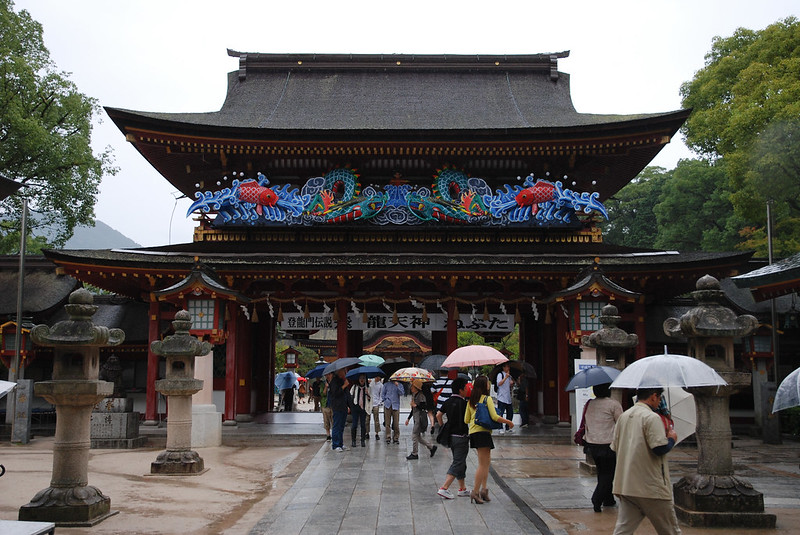A few years back I traveled around the Kansai area, and last year I headed North from Tokyo to visit the Tohoku region. This year, something a bit different – sidestepping Tokyo altogether, I decided to visit the south-western island of Kyushu. In the end I managed to almost entirely circle the island, taking in Nagasaki, Kumamoto, Kagoshima and more, in around ten days. But my trip began, and ended, in Fukuoka.
Flying In
There are a couple of quick ways into Kyushu. If you’re flying into Tokyo (Haneda or Narita) you can take the Shinkansen from Tokyo Eki – first on the Tokaido line to Shin-Osaka, then changing onto the line that runs through Hiroshima, then across onto Kyushu (first stop Hakata Eki, which is Fukuoka, then onward to Kagoshima). Or planes from Tokyo make the short hop to Kyushu’s airports – the biggest are Fukuoka and Kagoshima.
Alternatively, you can cut off that Tokyo leg of the journey entirely. I flew to Seoul via Korean Air, then on from Seoul to Fukuoka (about an hour). This is relatively cheap – not significantly more than a direct from London to Narita – and takes about 13 hours, plus the change in Korea.
On landing, Fukuoka Airport is right in the city. Take the shuttle bus from the International terminal to the Domestic one (add 30mins for this if you’re in a rush), and you’re dropped right by the subway entrance. From there, the city is 15 minutes away.
Hakata, Tenjin, What?
Tokyo has Tokyo-eki. Kyoto has Kyoto-eki. Fukuoka has, er, Hakata eki (and Hakata-ben, Hakata ramen, and so on). Which is simple enough to understand: Hakata, once a city of its own, makes up a substantial chunk of modern Fukuoka. And it’s likely where you’ll arrive from the airport. Use Google Maps with care, because there is a Fukuoka Eki – it’s just somewhere else entirely (Toyama Pref, Honshu).
Hakata Eki is the main JR station, but is also linked directly to the Kuko (airport) subway line. This’ll take you downtown to the Tenjin area, where the second, non-JR station (Nishitetsu-Fukuoka), and beyond towards the rather less interesting area around the Fukuoka Dome and Tower. If you’re used to a LDN/NYC/TYO-style subway system, Fukuoka’s will be a doddle (map here).
Or, you can just walk. Heading straight out of the West exit, less than 1km later you’ll hit the river and the area around Canal City (a huge, rather naff shopping mall) – cross that, walk on a bit and you’re in Tenjin. You could walk all the way to the Dome area, but I wouldn’t bother. The subway system takes Fukuoka’s own IC card (Sugoca), but Suica, Passmo and all the usual suspects work just fine.
Sightseeing
It’s hard not to like Fukuoka. The city’s smallish and walkable, the food’s great (see below), and the whole place generally gives off a relaxed impression. That said, it’s not bursting with obvious touristy things to do. I spent a lot of time eating and just generally chilling out – there’s a lot of green space in the city centre, and it’s a good city to just stroll around.
One bit of sightseeing I did do, though, involved a quick hop to Dazaifu (two short trains from Nishitetsu-Fukuoka – it’s very well signed in English for this particular trip). A bit like Nara, Dazaifu was once important politically, but now dominated by tourism – the Kyushu National Museum is enormous and fascinating, a giant Japanese barn-like structure filled with historical artefacts, and just down the road there’s the Tenman-Gu temple. When I visited (in the very heavy rain) three women were giving a shamisen recital to a mostly drowned crowd. It’s well worth the quick trip (oh, and there’s a good noodle restaurant right outside the station).
Eating
Fukuoka is the home of tonkotsu ramen, which you can find just about everywhere – at first I found myself staring at menus in vain for the characters 豚骨, only to realise that you don’t need to specify it – in Fukuoka, you just order ramen, and it’ll come in tonkotsu broth (and, obviously, it’ll be delicious).
The other culinary oddity are the streetside food stalls that pop up everywhere at dusk, and hang around until late by Japanese standards – like mobile izakaya, these serve up oden, yakitori, ramen and the like. And beer, of course – some even have it on tap. These would be ideal if you’re with a group of people, but even as a solo traveler you can sometimes find a space on the crowded benches to eat and chat. As well as the Tenjin area, a few stalls appear around Hakata eki (east exit).
Staying
I stopped in Fukuoka twice, on the way in and the way out. On arriving I stayed in The B Hakata – a perfectly nice if very slightly expensive business hotel 5 minutes from Hakata Eki’s east exit, which you can easily book online (English / Japanese). Nothing unusual here other than free coffee (thank god for free coffee). On the way out, I got stuffed by Asian Pacific Festival, which booked up all hotels around Hakata, but found a room in the Seaside Twins Momochi. It was, literally, the last hotel in town, and it was fine on that basis. Otherwise, the location (near the dome) isn’t great.
From Fukuoka, I caught a Limited Express service west to Nagasaki.
This is part of my Japan on a Budget series – a collection of random advice on how to travel Japan without spending a fortune. See the rest here.


